The Erotic Neck
How Japan became obsessed with it
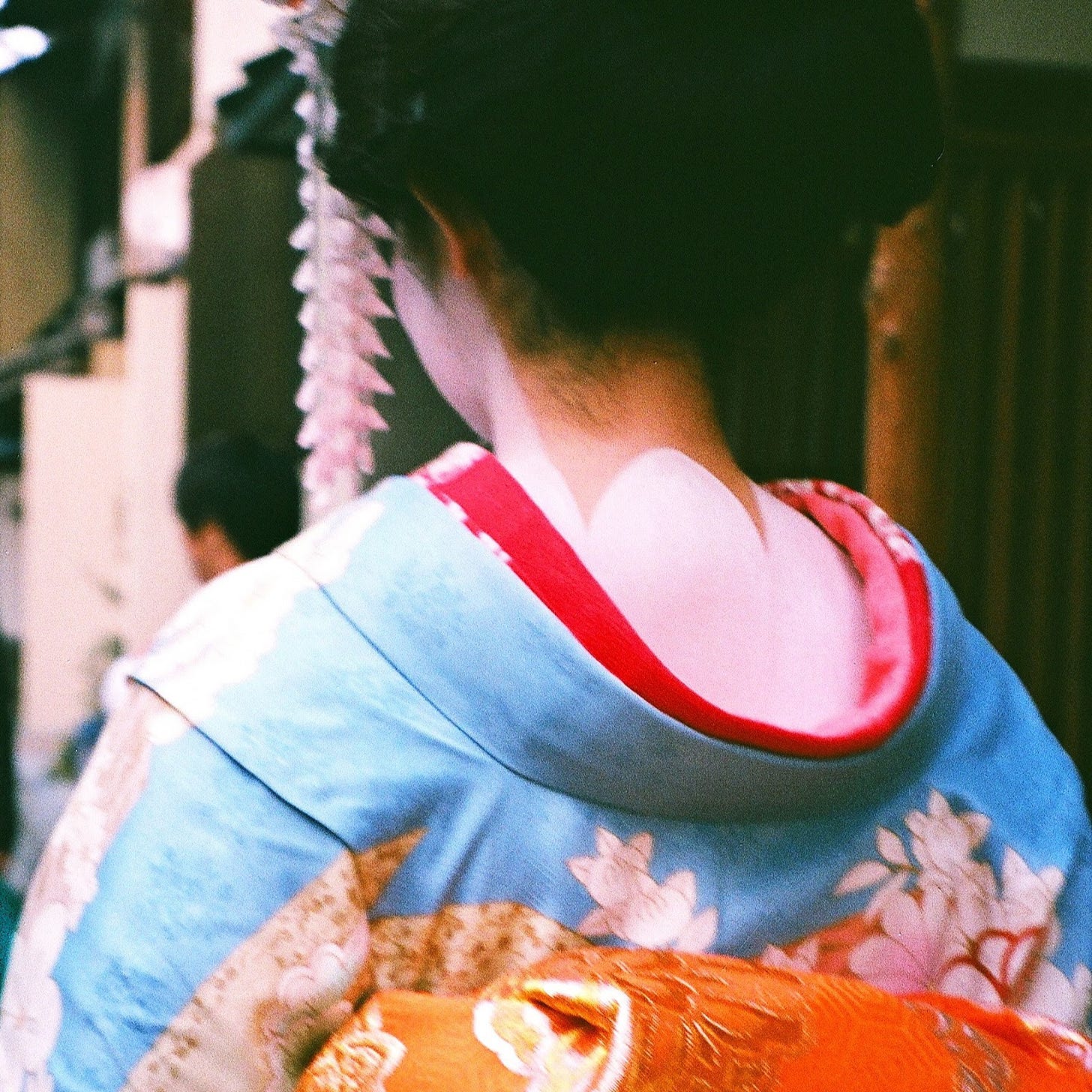
The human body must be pretty amazing because people go crazy over the tiniest glimpse of it. In Edo period (1603 - 1868) Japan, one of the most erotic parts of a woman’s body was the nape, the back of the neck. How did this neck worship come about?
The nape craze
Think of the pleasure quarters of the Edo period as a cultural geyser, a geyser that squirts gallons of culture into the air to rain upon society. What the ladies of pleasure wore became the fashion of the Edo period.
Courtesans wore their hair up to give everyone provocative peeks of their napes. Tailors started cutting collars wide so women could easily drape them low in the back, and pretty soon even townswomen walked around with reverse cleavages.
Geisha painted their necks in styles called eri-ashi (衿足, “neck legs”) or sanbon-ashi (三本足, “triple legs”).
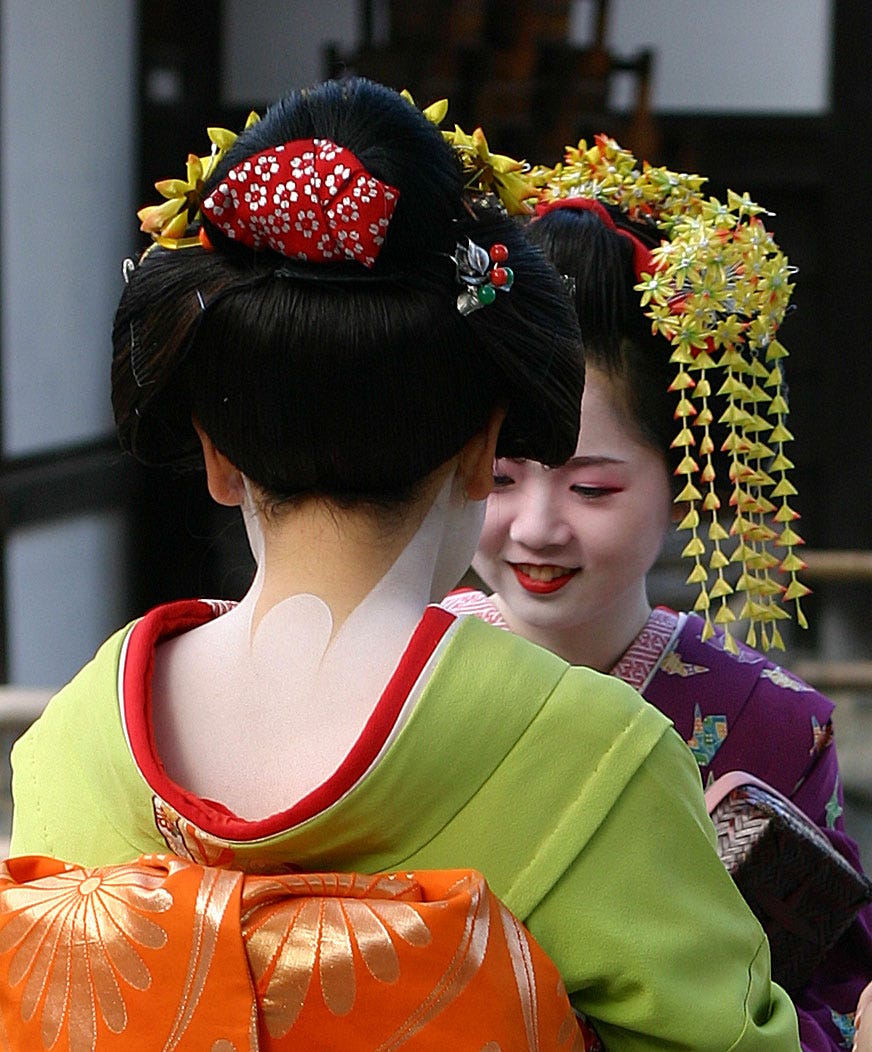
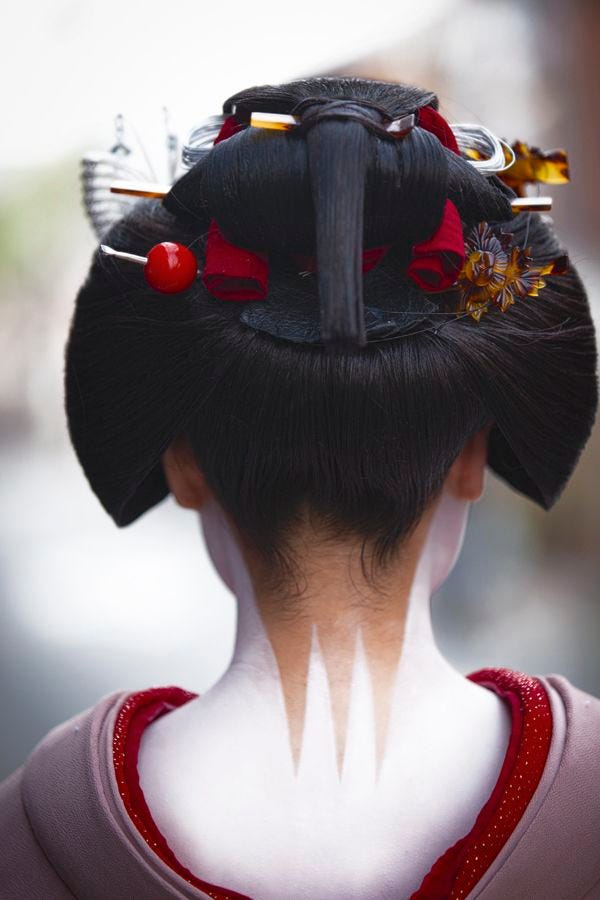
The patterns make her neck seem longer and more slender, and the contrast between the white makeup and skin draws your eye. It’s like catching a tantalizing hint of real skin behind a mask or the slits of a veil.
Women shaved or plucked their necks smooth as my uncle's head. A hairy neck was like today’s hairy legs or hairy other parts.
Why the neck?
It had to do with hairstyles and kimonos.
Throughout most of Japanese history, the hairstyles of noblewomen covered their necks. For example, Heian noblewomen had long flowing hair that made it hard for necks to peek through. Meanwhile, commoner women wore their hair up regularly because they actually had to do manual labor. Commoner napes were too common to be enticing.
Of course, the elites did experiment with upswept hairstyles over the years, but it wasn’t until the Edo period that it became common for women to tie their hair up in elaborate buns. The amount of hairstyles just exploded. Necks, once shy and hidden behind black veils, found themselves thrust into the public eye.
Oh dear, they thought, it’s quite chilly. Is this the outside world? Why, there are so many things! And people! And they’re looking at me. Okay, be sexy now, be sexy. Elongate! Oh gosh I can’t, I feel so naked. I should cover up but why must this collar be so low!
Or something similar. But it was too late. Society had seen the neck, and society wanted more.
Which leads us to kimonos. As a world expert in fashion, I can tell you that a kimono’s purpose is totally opposite that of a Western dress. A dress that you would find in, say, a modern wedding reception, is designed to show off a woman’s body, either her curves, her skin, or, in the case of backless dresses, how she looks face down in bed to her parents, I guess?
A kimono is designed to show off none of that.

If you look at someone wearing a proper kimono (as opposed to the improper ones you see at college Halloween parties), her silhouette is straight up and down, like a sushi roll with sleeves. She even wears padding to keep that shape. Her body underneath could be curvaceous or thin as a toothpick, no one would know. The outfit also covers every piece of skin except for her head and hands.
Thus, for a Japanese man with eyes, any sighting of skin was like a diabetic sighting chocolate. He can’t help but imagine tasting it.
Sex workers, always the pioneers of culture, started wearing their hair up and pulling their collars down. It sparked a whole nation’s love affair with necks.
Culture follows
The nape sauntered its way into art and literature. Art prints teased their buyers with explicit shots of courtesan napes, and you often saw more neck, front and back, than you would have seen in real life.
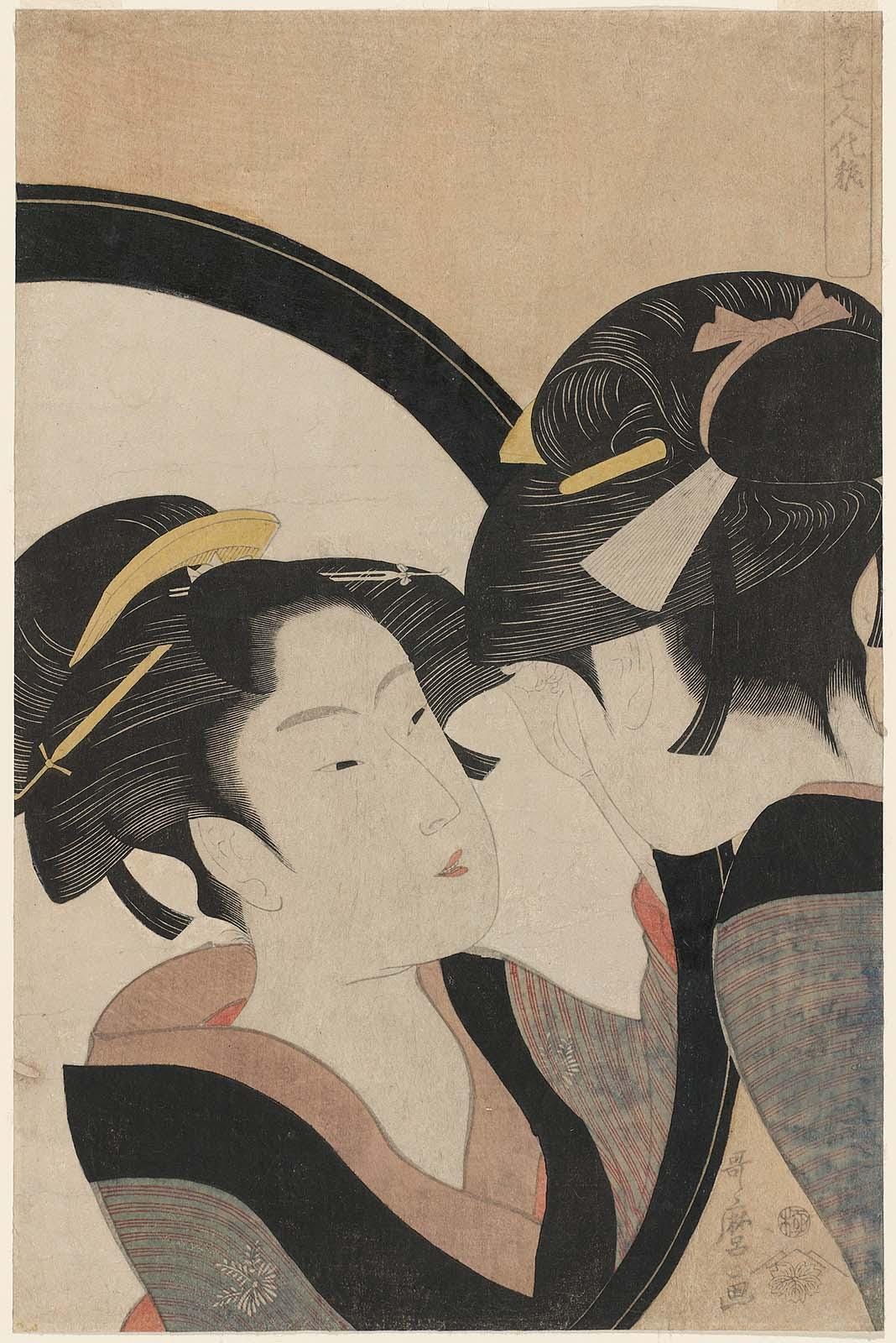

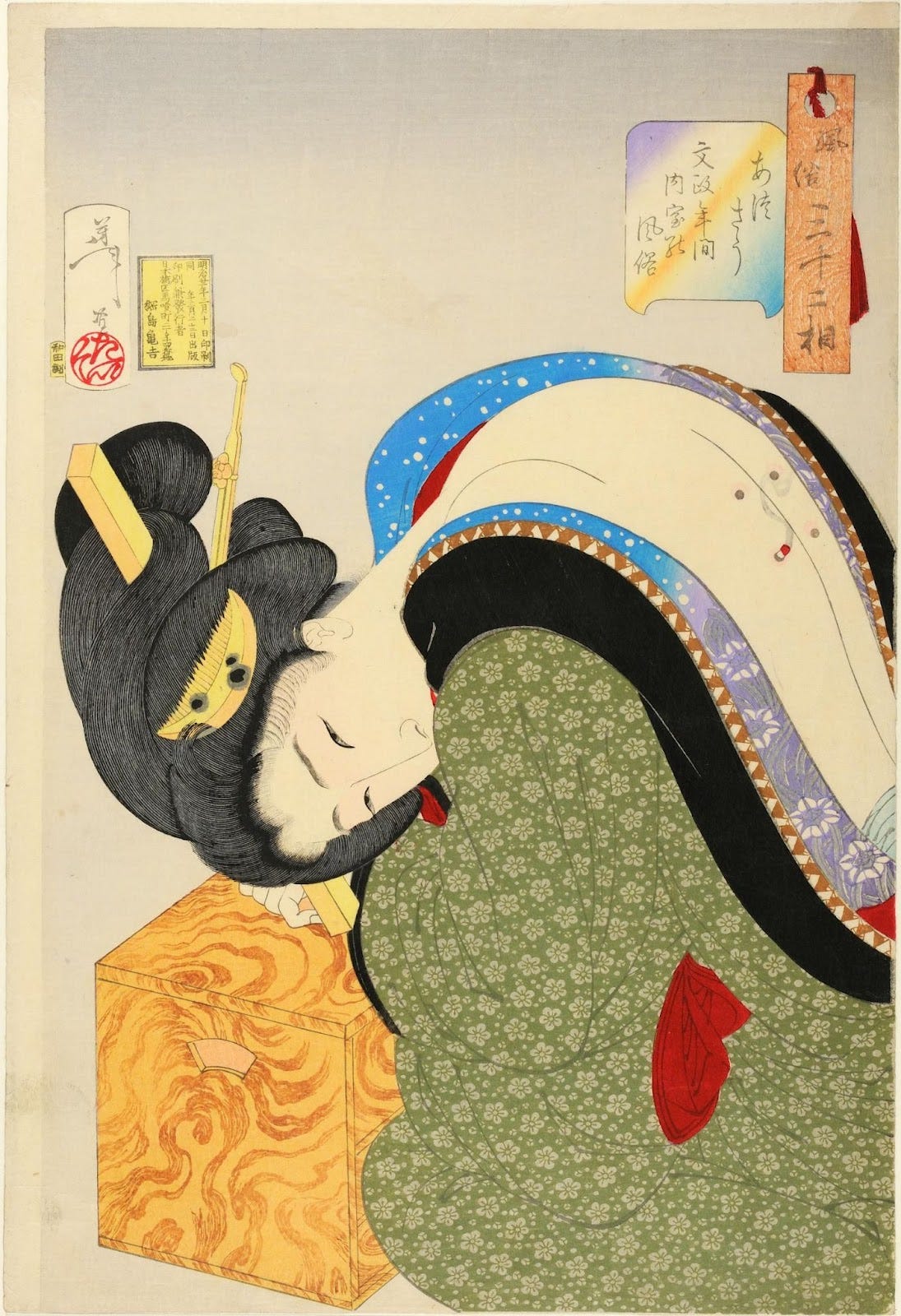
Writers and poets wrote about women flashing their white napes during intimate scenes. Famous author and massive pervert Ihara Saikaku in 1686 describes a woman like so:
her neck was long and slender; no untidy wisp of hair marred the perfect elegance of her back.
In another story, he writes about a sexual encounter that’s kicked off with a bite on the neck, more evidence that people thought the neck was a very hot part of the body:
Then she bit him on the neck and in a moment they were in the throes of love.
Yosano Akiko in 1901 wrote a poem about an intimate experience with her lover, which, of course, includes mention of the nape:
Lifting your head,
my slender arm beneath
the nape of your neck,
I want, suddenly, to suck
your feverish lips with mine
That’s a 10/10, would blush again.
There’s a yōkai called rokurokubi that looks like a woman with a long neck stretching meters in length.
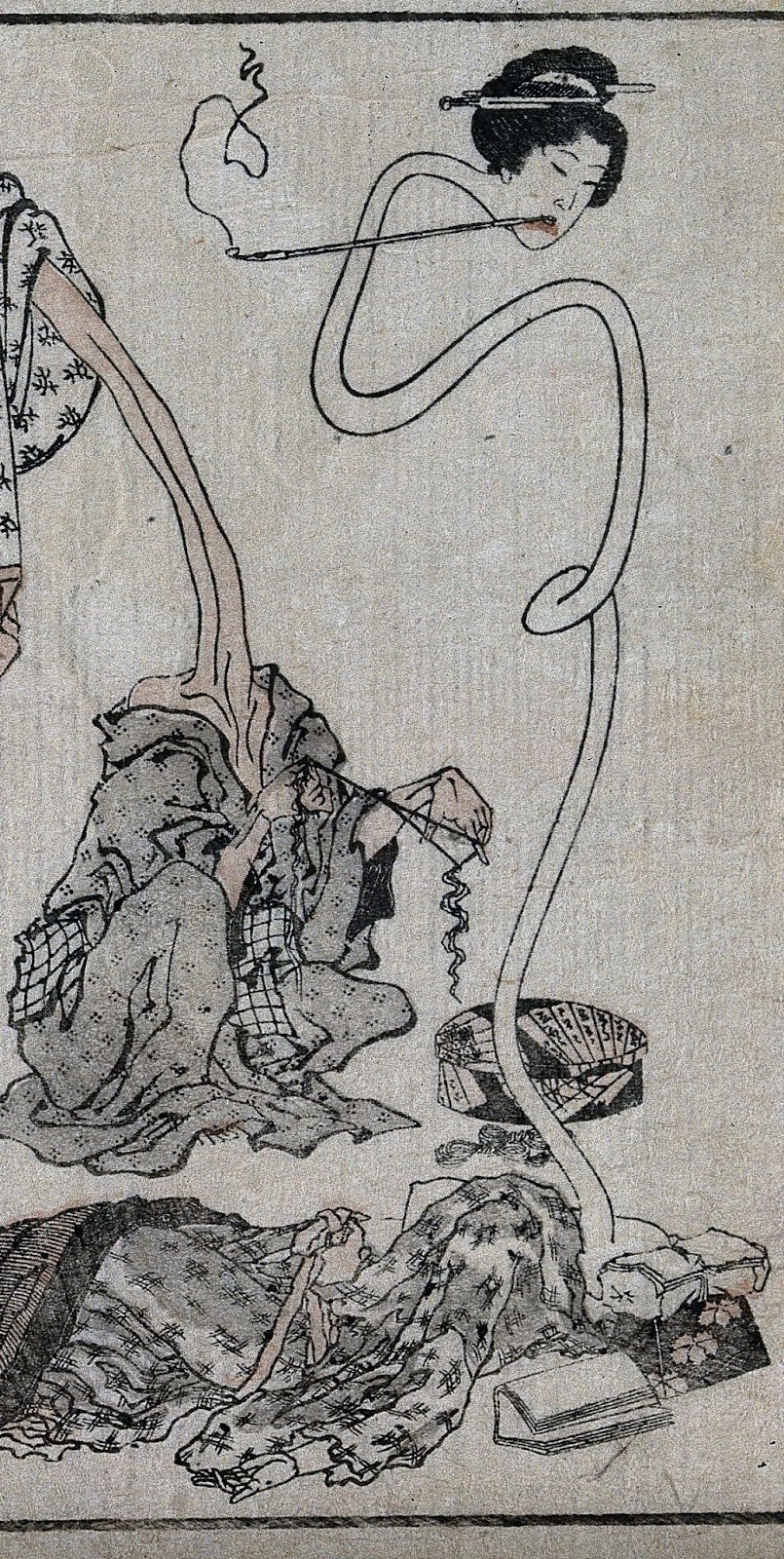
Impossible for a Japanese man to control himself when faced with that long, smooth nape.
Nape. Nape…nape…the word is sounding more seductive the longer I write this article.
In the Meiji period (1868 - 1912), foreigners introduced new fashion trends. Breasts, hips, and legs toppled the dominance of the neck, although it continued to be popular.
Today, geisha still paint their necks in the eri-ashi or sanbon-ashi styles. And in a traditional Japanese wedding, a classic bridal kimono will have the back collar pulled down to reveal the bride’s nape.

